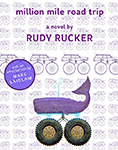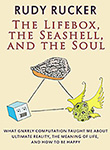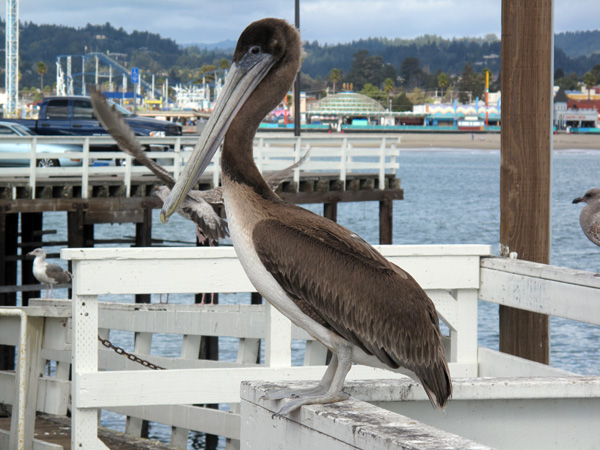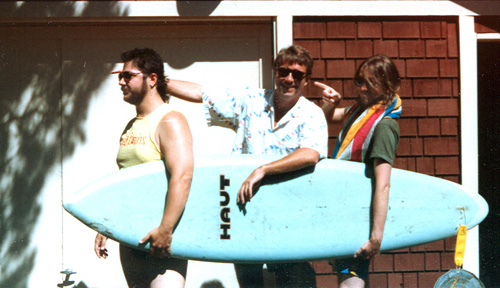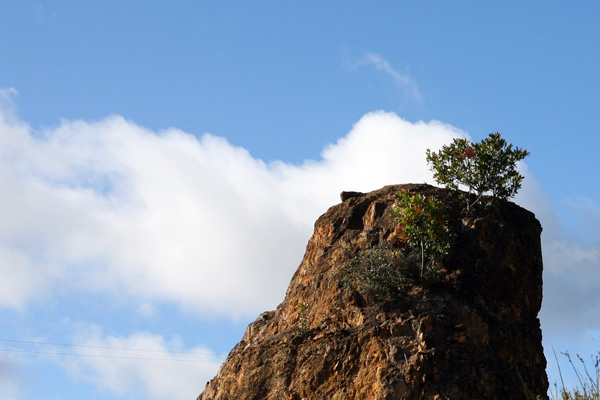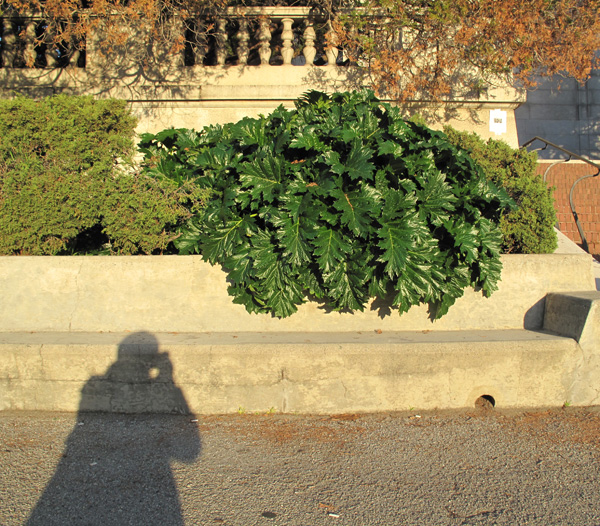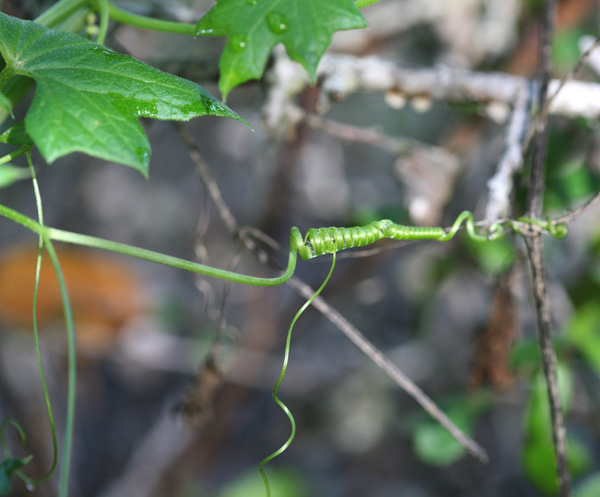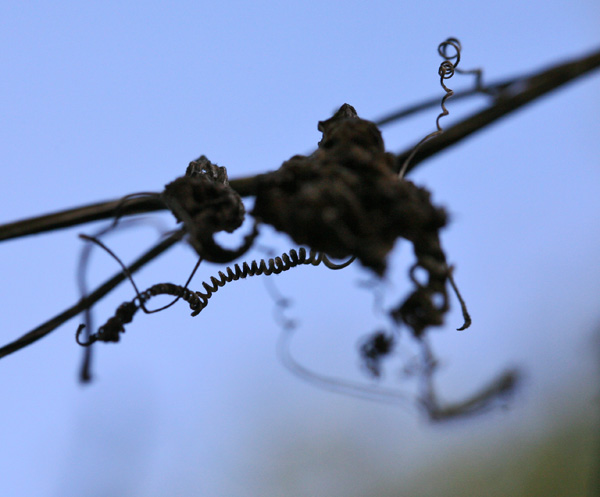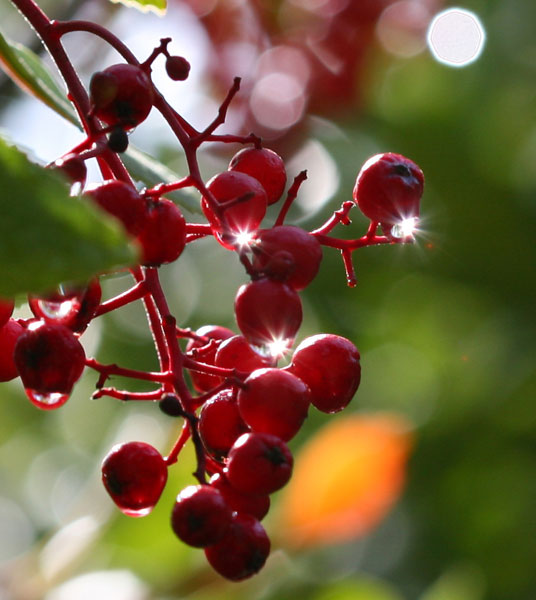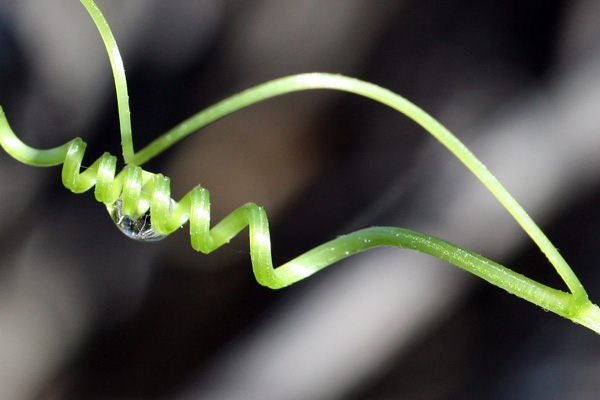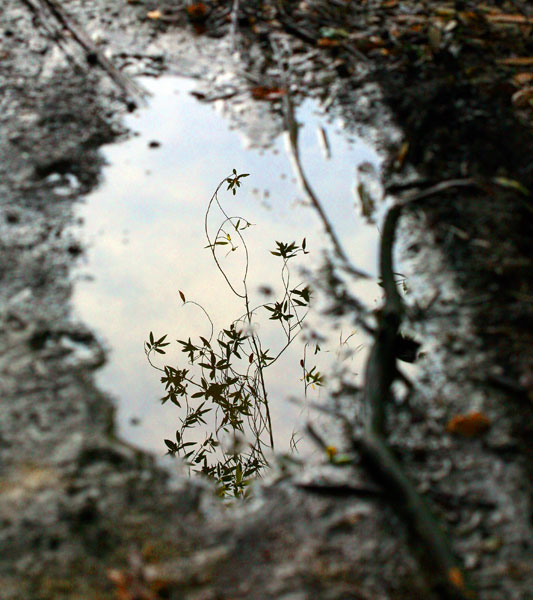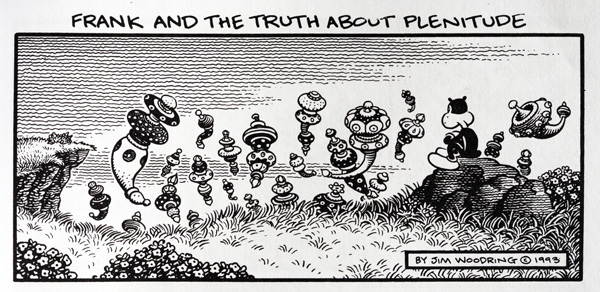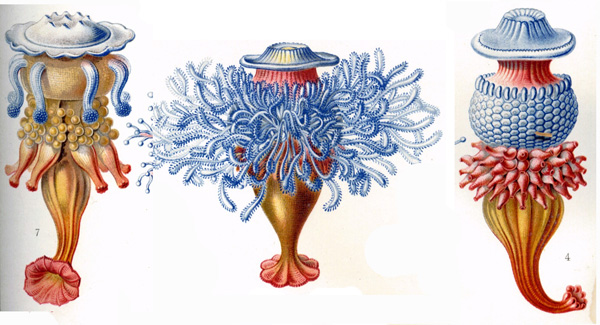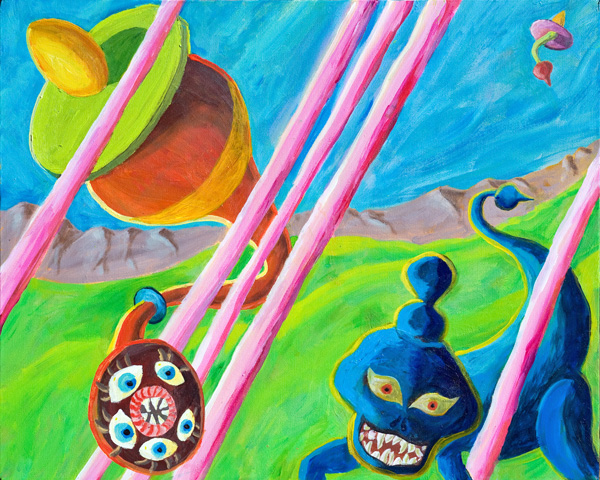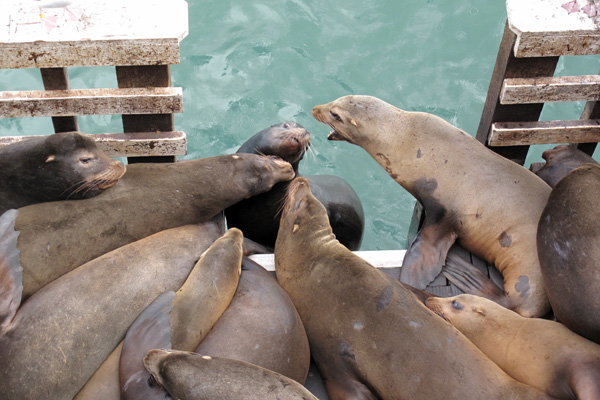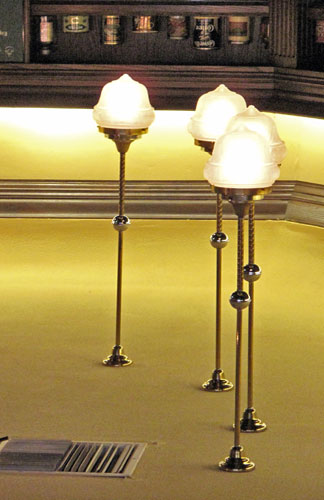
[Photo copyright (C) Embry Rucker 2009. Shot for DC Shoes.]
I was just looking at some of the pictures in the “Current” portfolio of my photographer nephew Embry Rucker. Wow. Maybe this woman lives in Elfland! I asked Embry for more info, but he just said: “i forget her name – she’s in some rock band in LA – or was last year, she could be a suburban mom by now for all i know.”
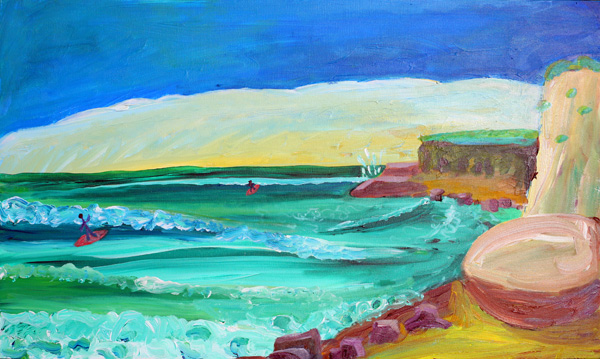
I was out at Four Mile Beach north of Santa Cruz yesterday, working on a new painting. I’ll be layering on more versions of this one…
Several surfers paused to inspect my progress. They approved. “That’s my beach!”
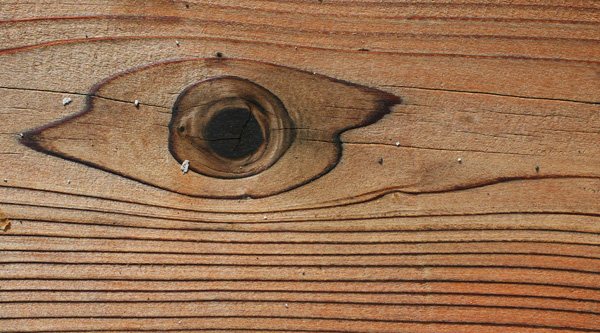
My writing problem today is that I haven’t decided what it’s going to be like in Flimsy. What are some options? Before listing options, note three desiderata to keep in mind.
Playable. The world should be able to support a story. In particular Jim should be able to move around it as a human character, and he should be able to interact with the flims in fairly comprehensible ways.
Meaningful. The world should transreally represent something that’s important to me, and should carry some satiric or philosophical subtext.
Wonderful. The world should be beautiful to think about, and somehow be essentially different from any environment in our present or past world.
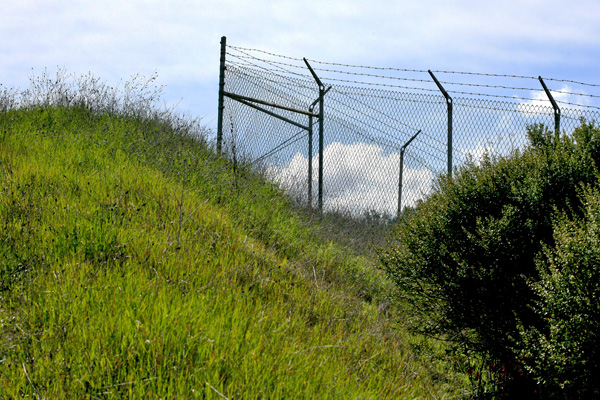
So here are some possible worlds that come to mind.
The Afterworld. Whatever I decide on for Flimsy initially, we might eventually reveal this world to it overlap with the afterworld—and then have a big scene where Jim meets his dead wife. The “surprise, this is heaven” move is however a bit of a genre cliché, and corny, and plot-wise it’s a kind of retrograde step to meet his dead wife, and, come to think of it, I used the afterlife in White Light. So I think I’d rather not do this here.
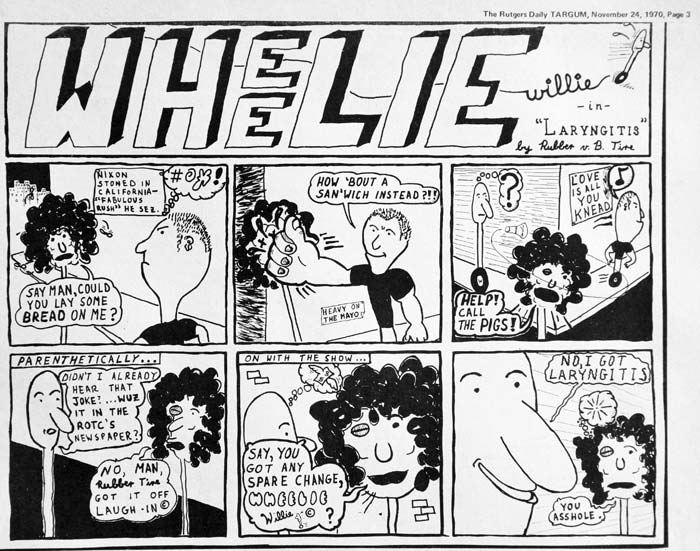
[A cartoon I drew as a hippie in 1970 for the Rutgers campus newspaper. The somewhat reactionary joke in it actually was something I’d seen on TV show, Laugh In.]
Cartoon world, with cartoon conventions. Fine, but if I do this, I immediately face the same what-is-the-nature-of-Flimsy question all over again, for I have to ask what kind of underlying world this is a cartoon of. Of course when I mention cartoons here, I think of Frank, and of the jivas that Jim Woodring draws—and maybe the yuels would look like spiders—but to make this playable at novel length, I think I’d need for the flims to take on a more humanoid form most of the time. I think that, rather than having a cartoon world, I might better have a somewhat realistic humanoid world, but with cartoon physics.
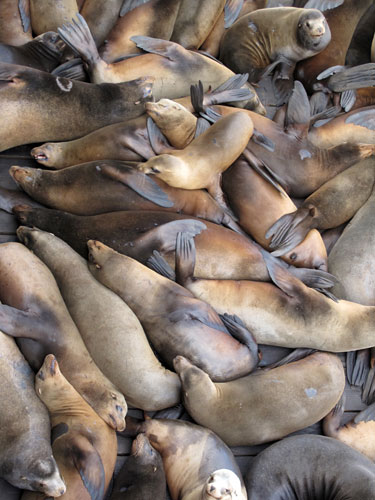
Fantasy kingdom. The default for “fantasy” these days is a medieval land with nobles, knights and dragons. But it’s hard for me to get very excited about such a world, as it’s so burdened with received ideas, so fannish, so non-transreal. To make a fantasy land that’s meaningful and vibrant for me, I might rather suppose that it’s a rural world like the paintings of Bosch and Bruegel. But I have in fact written about this B & B rural world in As Above So Below and in Hylozoic. So, wait, how about a fantasy world that’s…Elfland! I’ll break out a new section for that.
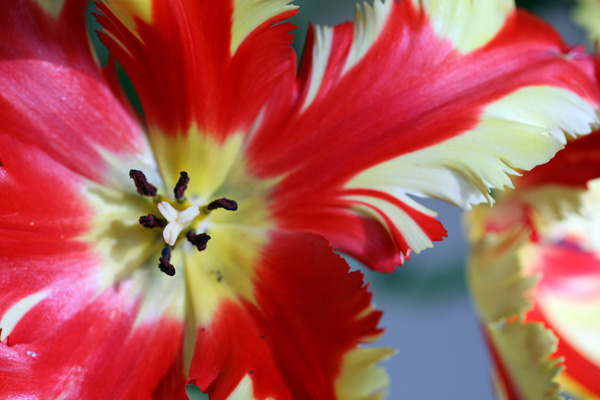
Elfland. I think this might I what I really want to write about. A land where magic is real, and it’s not the Middle Ages. So elves, goblins, elementals, and so on are in fact real, but they live in the world of Flimsy that’s slightly askew from ours. Note that I wouldn’t want to be overly tendentious about matches between Flimsy and the folk mythology of our fairy tales, as this leads to mere name-checking. What might it be like in my Flimsy Elfland? I could have a kind of episodic picaresque, like a trip through America, and we encounter a variety of scenes, each with its own odd natives.
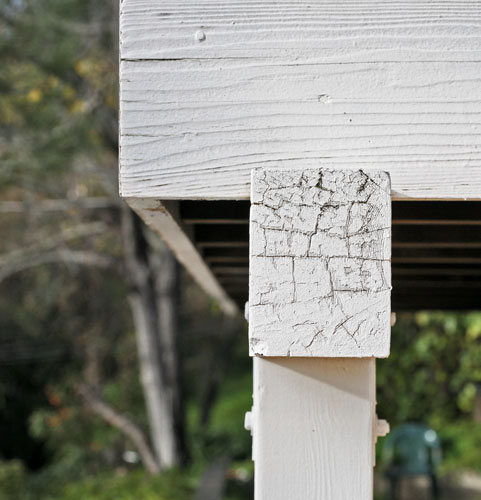
We might start in a rural Elfland akin to the Grulloo Woods of Frek and the Elixir—recall that the Grulloos were like goblins, and their bio-tweaked tools were effectively like magic. Transreally, this is my country childhood near Louisville, Kentucky. And then we segue to a small town, like all the little villages I lived in over the years: Highland Park, Geneseo, Lynchburg, Los Gatos. It’s like our contemporary world, only with things like magic that works, things like flying carpets, genies in bottles, spells, demons. And then, near the end, we get to the capital of Flimsy to deal with the issue of installing Ayaka as the Jotei, or Empress. And maybe this city is like Kyoto. And we might also visit the power center of the yuels, which is a brutal immense Manhattanesque city. Maybe for the finale, Flimsy segues into a dreamscape or into a surrealist scenario, like the Magritte world they visit at the end of Frek and the Elixir.
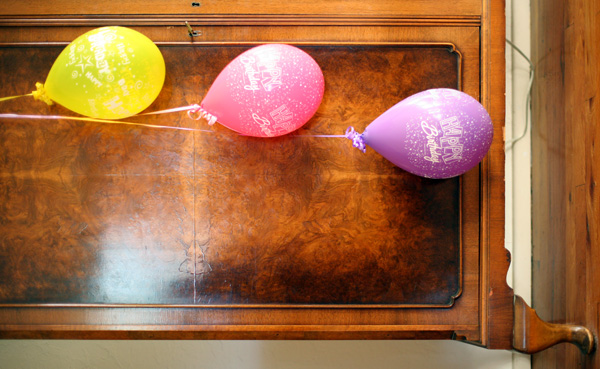
It would be good to have some specific and radical difference to the laws of nature or the nature of society in this other world.
In our world, it’s easy to change something physically or to build a machine. But it’s hard or impossible to affect something with your mind. What if it were the other way around in Flimsy. They can teleport stuff, but they can’t put together a wagon or a flight of stairs. They’re unable to build a window that lets in light and keeps out the wind and rain, they count on teeking away the droplets one by one—or maybe they train the house wall to do the teeking, maybe the house teeks something like a force field barrier within the window frame.
Would they even need a house in a telepathic Elfland? It doesn’t protect you from teleporting thieves or ruffians. Any protection is, once again, going to be teek-based. We might set this up by having Weena be very awkward with physical things. She’s not used to using her muscles to do stuff. But, back to the point, sure we want houses in Elfland. So it’s what I call playable.

Do understand that I use the world “Elfland” with a touch of irony and in somewhat the same spirit that I might touch a sore gum-canker with the tip of my tongue. The very corniest (yet somehow among the most memorable) verses we had to memorize in school were these:
The splendour falls on castle walls
And snowy summits old in story:
The long light shakes across the lakes,
And the wild cataract leaps in glory.
Blow, bugle, blow, set the wild echoes flying,
Blow, bugle; answer, echoes, dying, dying, dying.O hark, O hear! how thin and clear,
And thinner, clearer, farther going!
O sweet and far from cliff and scar
The horns of Elfland faintly blowing!
Blow, let us hear the purple glens replying:
Blow, bugle; answer, echoes, dying, dying, dying.O love, they die in yon rich sky,
They faint on hill or field or river:
Our echoes roll from soul to soul,
And grow for ever and for ever.
Blow, bugle, blow, set the wild echoes flying,
And answer, echoes, answer, dying, dying, dying.— From “The Princess,” by Alfred Lord Tennyson
I can still hear John Cadden reciting this my ninth grade English class, little John with his cozy Kentucky accent…


